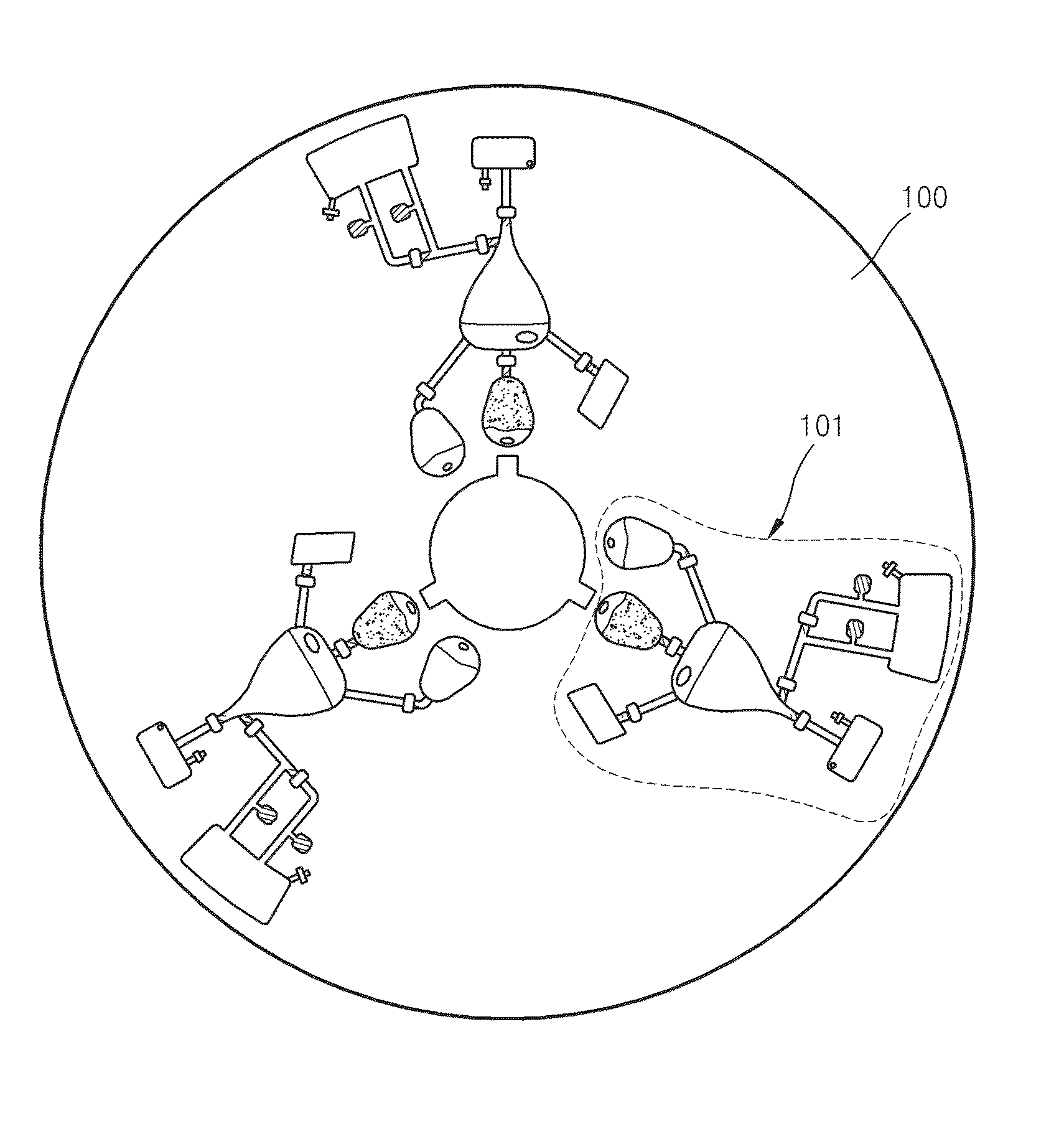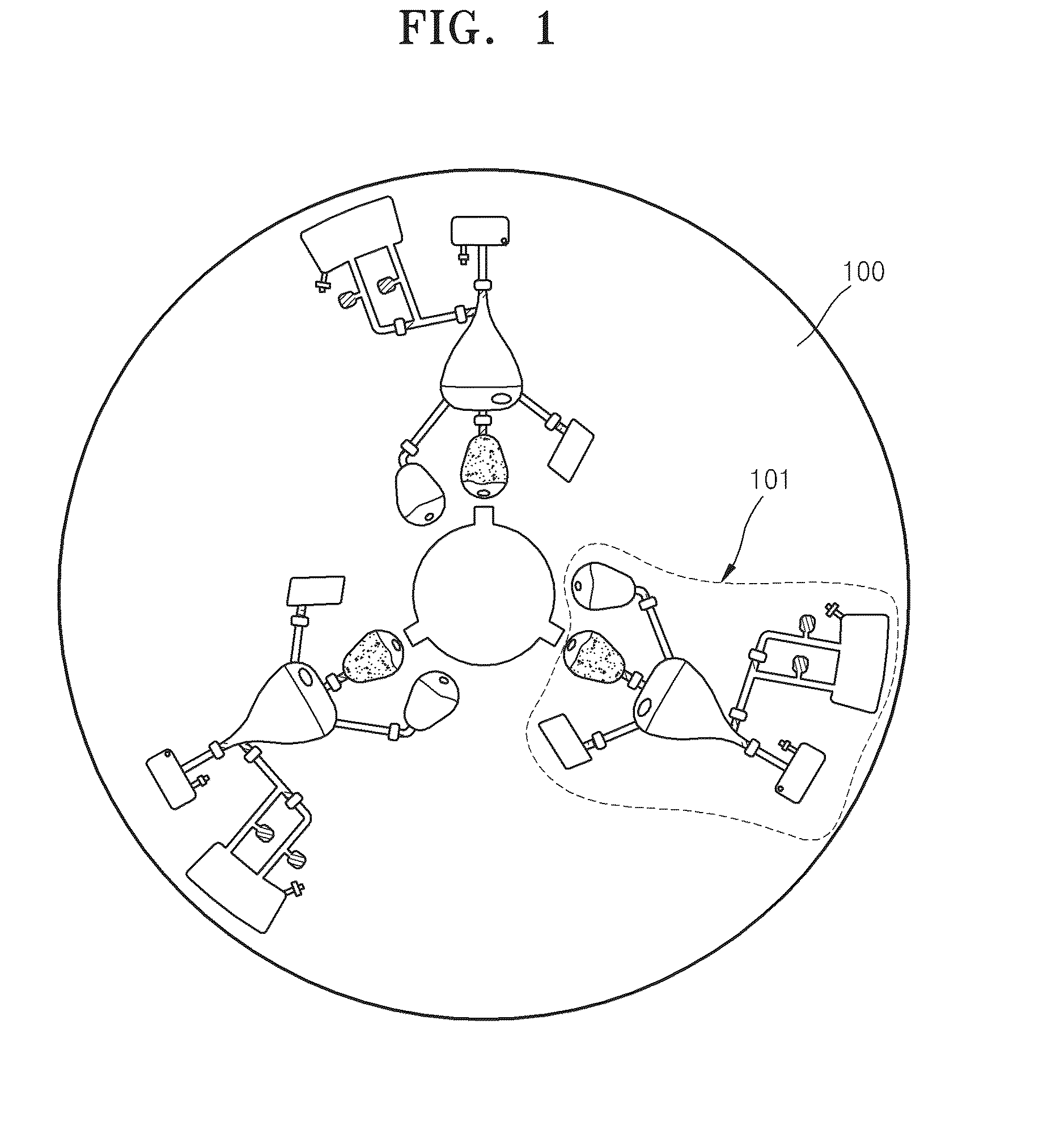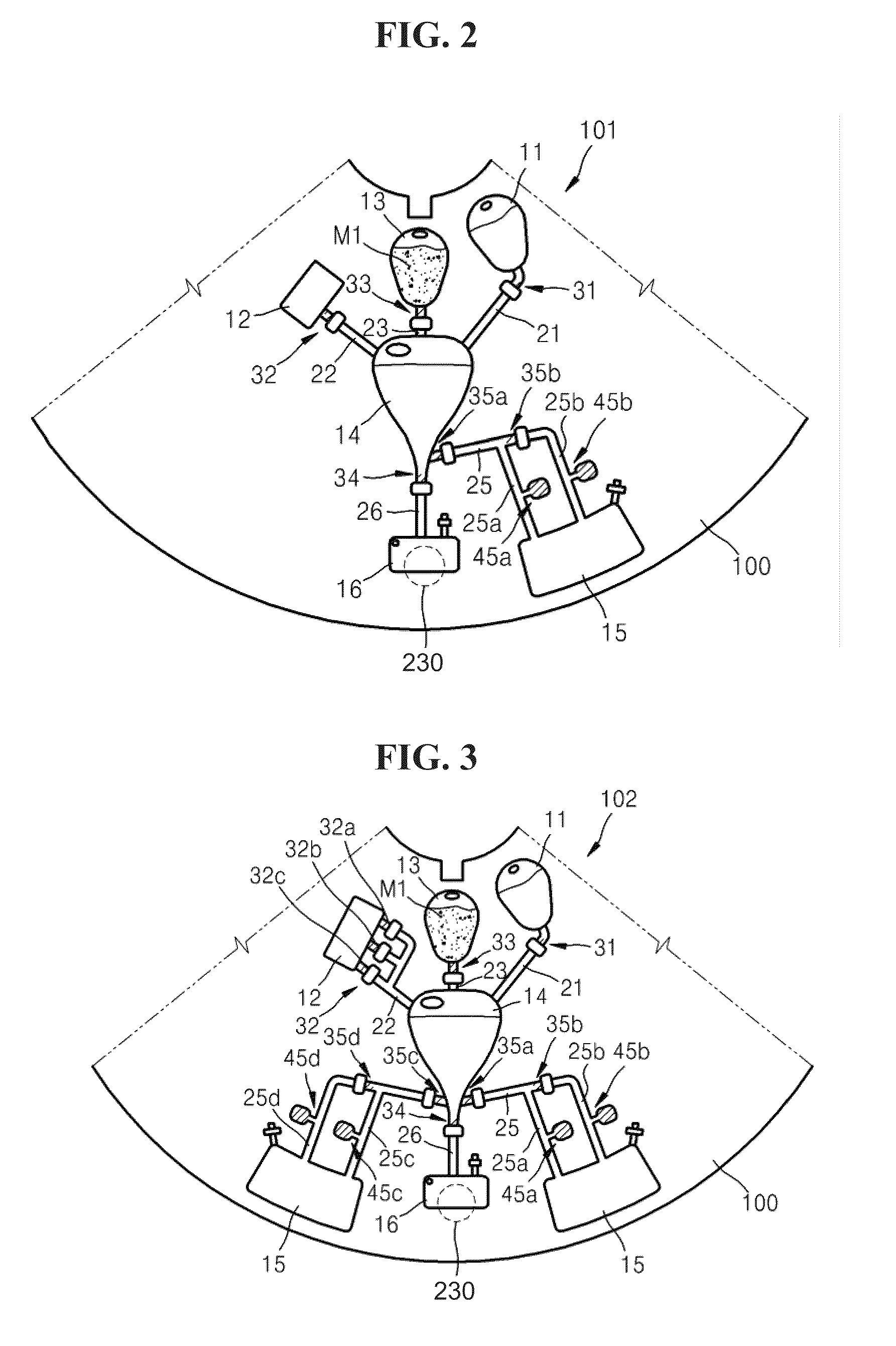Centrifugal force-based microfluidic device for protein detection and microfluidic system including the same
a microfluidic device and centrifugal force technology, applied in the field of centrifugal force-based microfluidic devices for protein detection and microfluidic systems including the same, can solve the problems of difficult control of fluid flow and temperature of functional units in the body of revolution
- Summary
- Abstract
- Description
- Claims
- Application Information
AI Technical Summary
Benefits of technology
Problems solved by technology
Method used
Image
Examples
Embodiment Construction
[0045]Hereinafter, the present invention will be described more fully with reference to the accompanying drawings, in which exemplary embodiments of the invention are shown.
[0046]FIG. 1 is a plan view schematically illustrating a microfluidic device according to an embodiment of the present invention. Referring to FIG. 1, the microfluidic device includes a body of revolution 100 and one or more microfluidic structures 101 disposed on the body of revolution 100. According to the current embodiment of the present invention, the body of revolution 100 may be a disk-shaped platform. The platform can be easily manufactured and formed of plastic materials such as an acryl and PDMS and the surface of the platform is deactivated. However, the materials are not limited to the examples above and may be any materials having chemical and biological stability (i.e., inactivity), optical transparency, and mechanical processability. The body of revolution 100 may have a hole at the center thereof....
PUM
| Property | Measurement | Unit |
|---|---|---|
| size | aaaaa | aaaaa |
| size | aaaaa | aaaaa |
| size | aaaaa | aaaaa |
Abstract
Description
Claims
Application Information
 Login to View More
Login to View More - R&D
- Intellectual Property
- Life Sciences
- Materials
- Tech Scout
- Unparalleled Data Quality
- Higher Quality Content
- 60% Fewer Hallucinations
Browse by: Latest US Patents, China's latest patents, Technical Efficacy Thesaurus, Application Domain, Technology Topic, Popular Technical Reports.
© 2025 PatSnap. All rights reserved.Legal|Privacy policy|Modern Slavery Act Transparency Statement|Sitemap|About US| Contact US: help@patsnap.com



